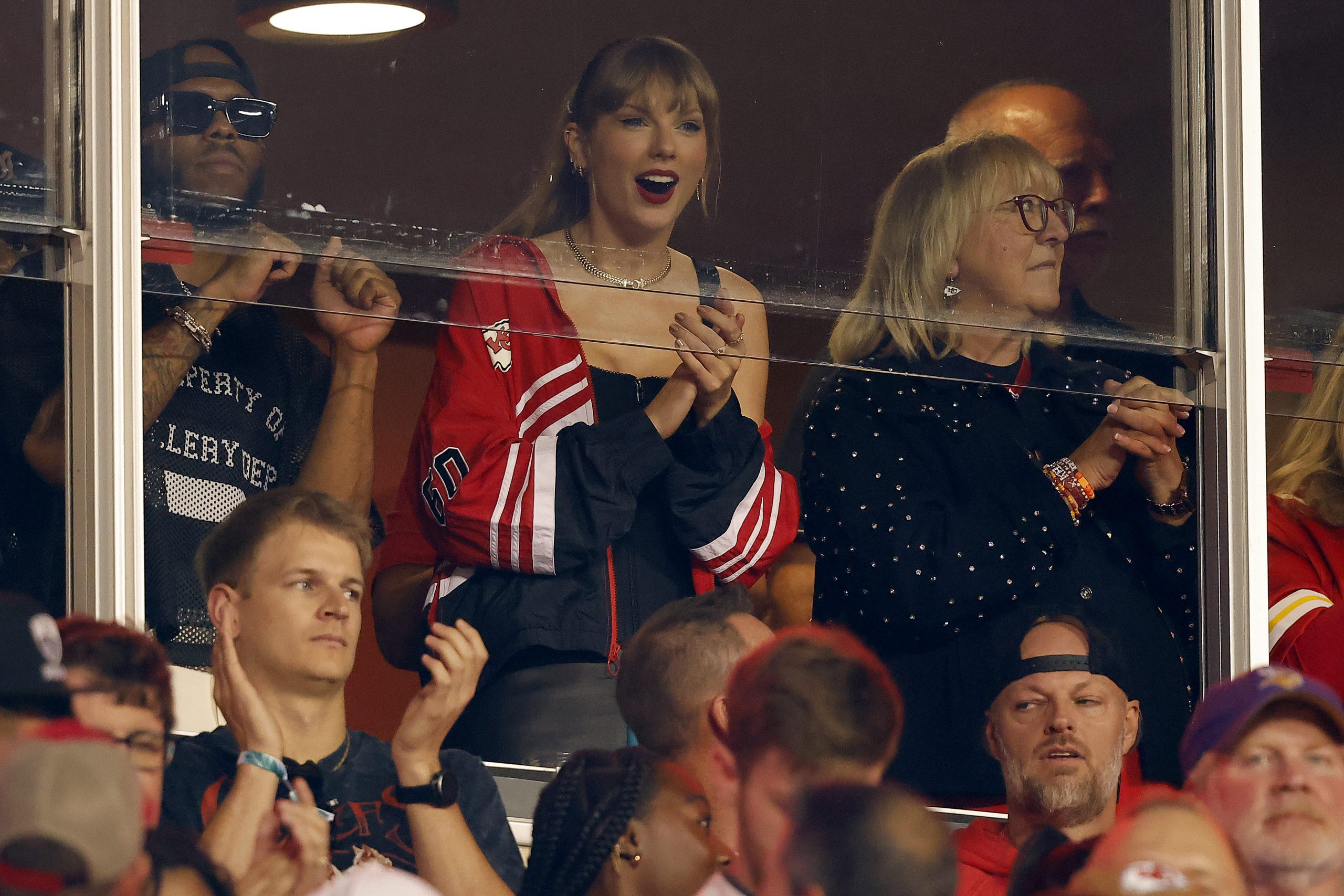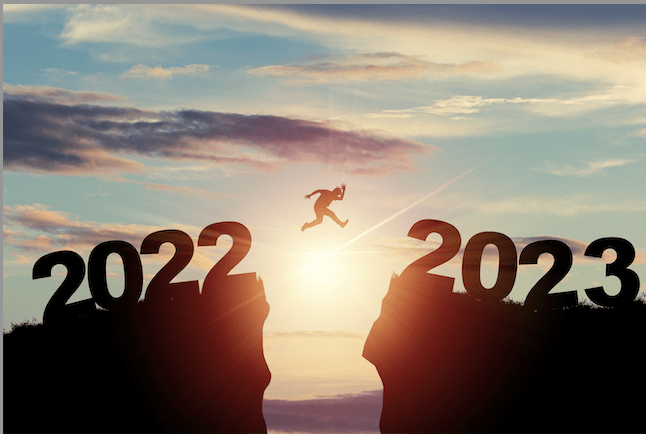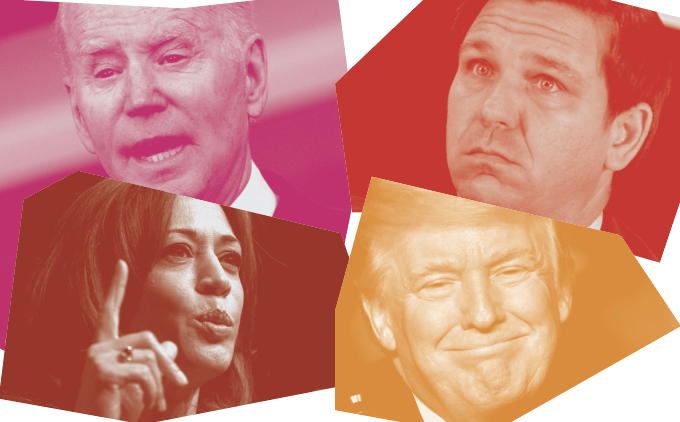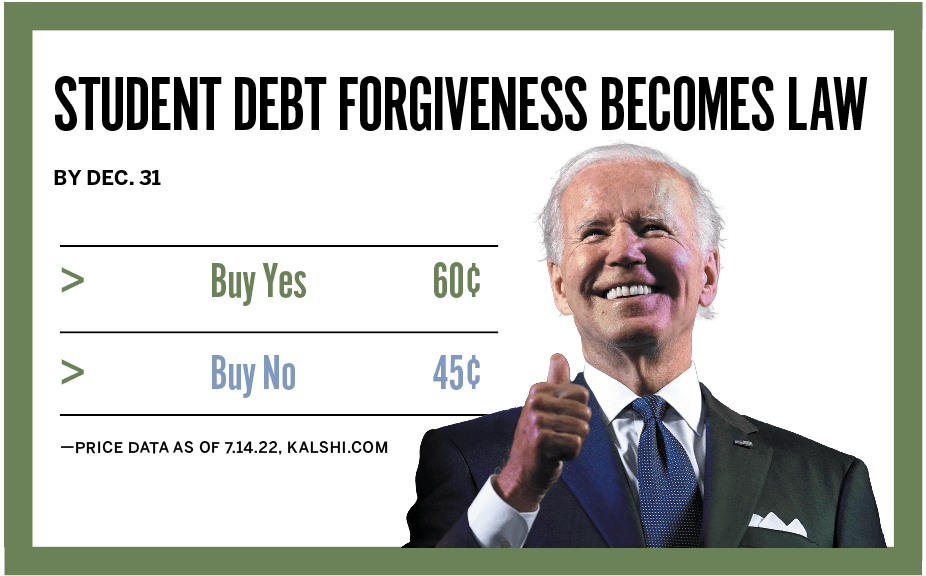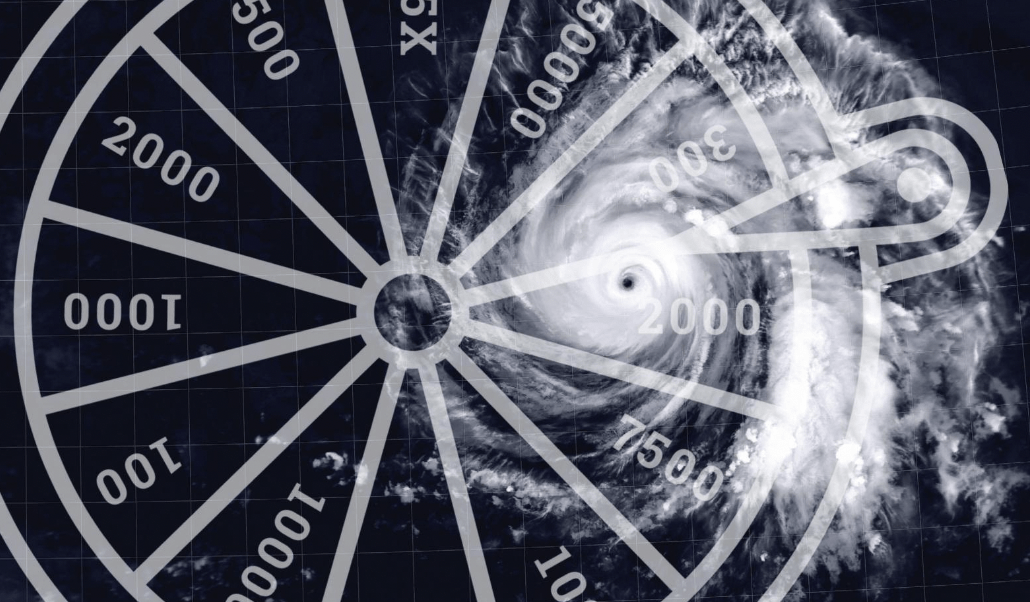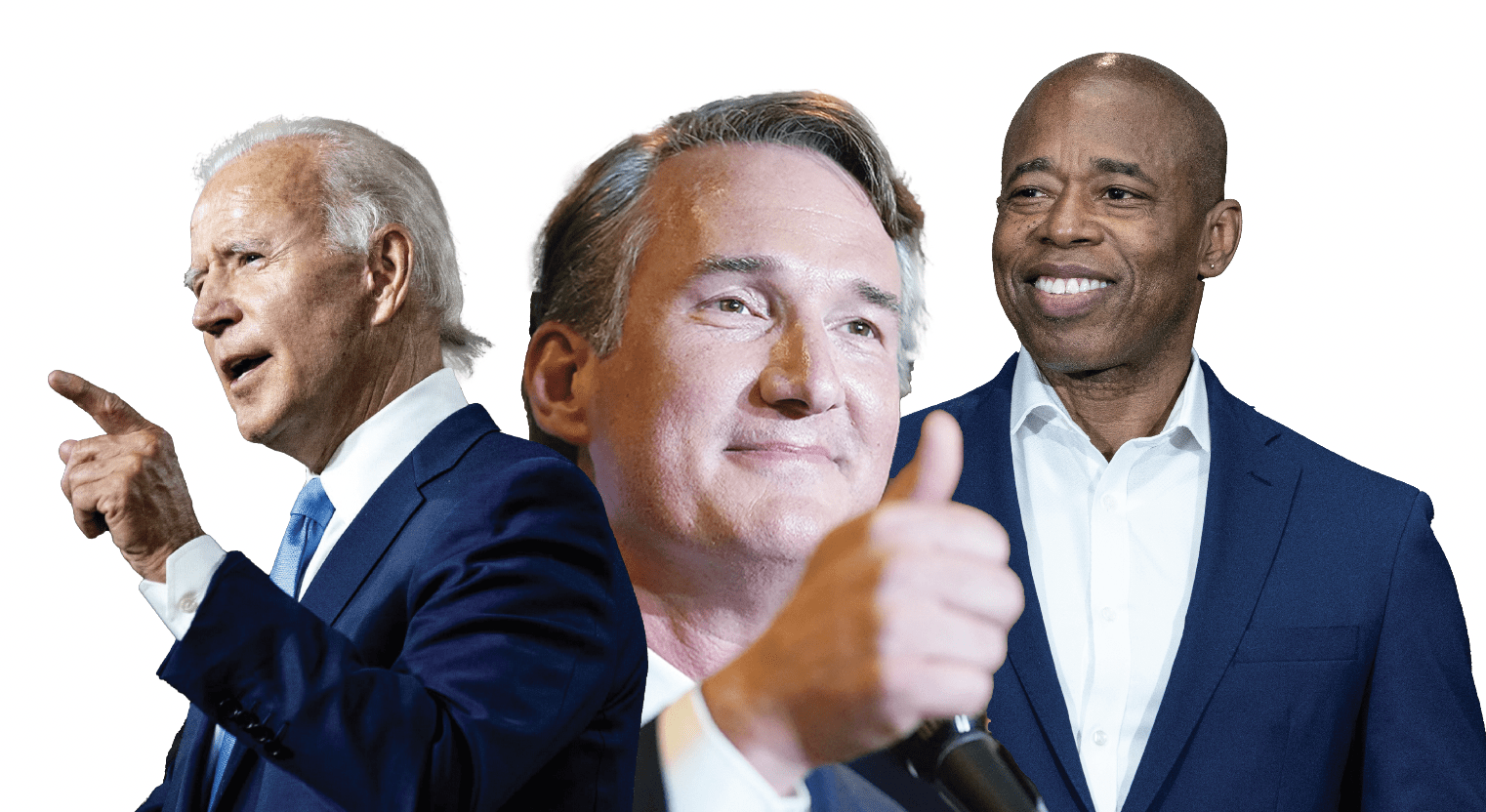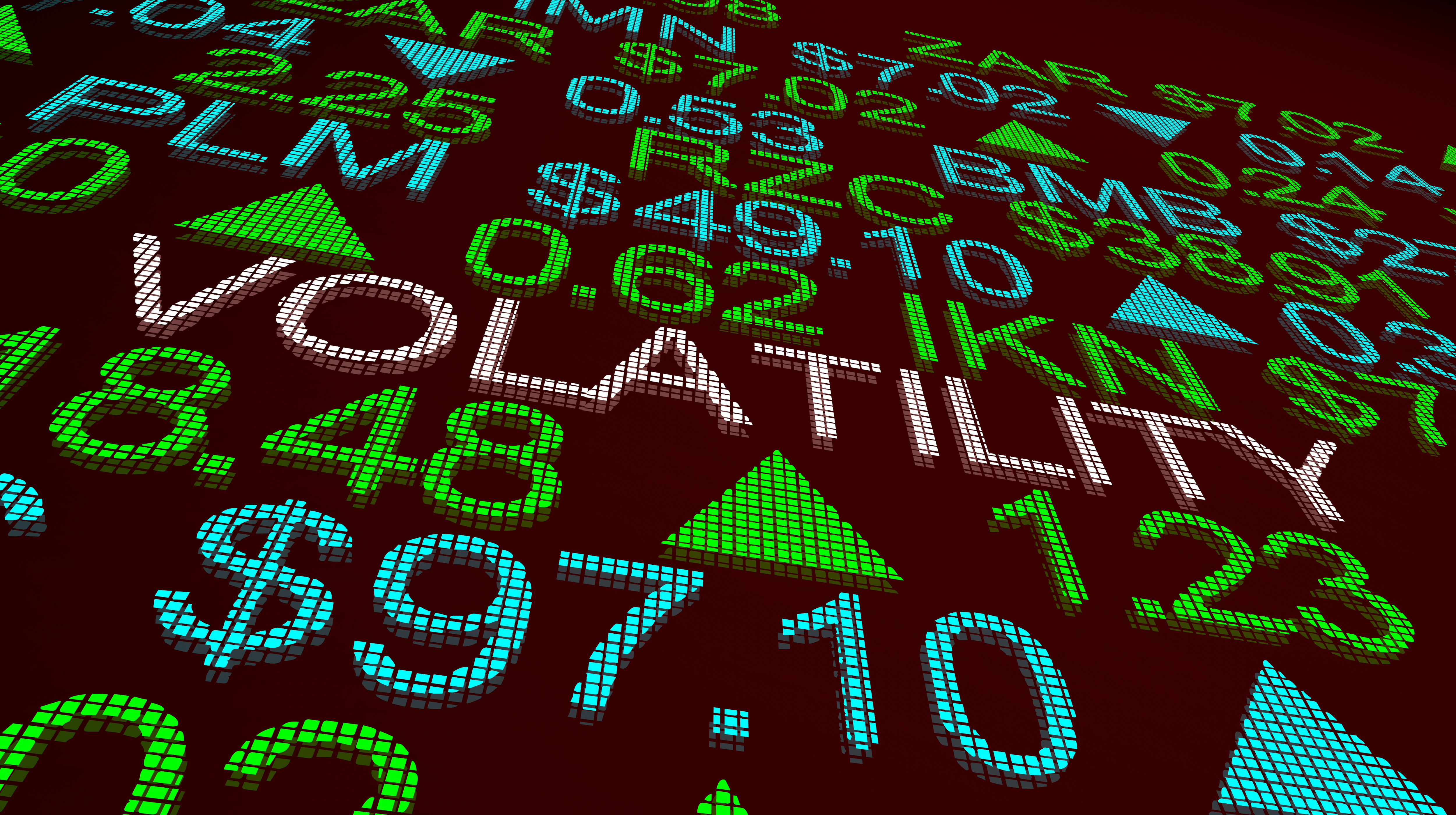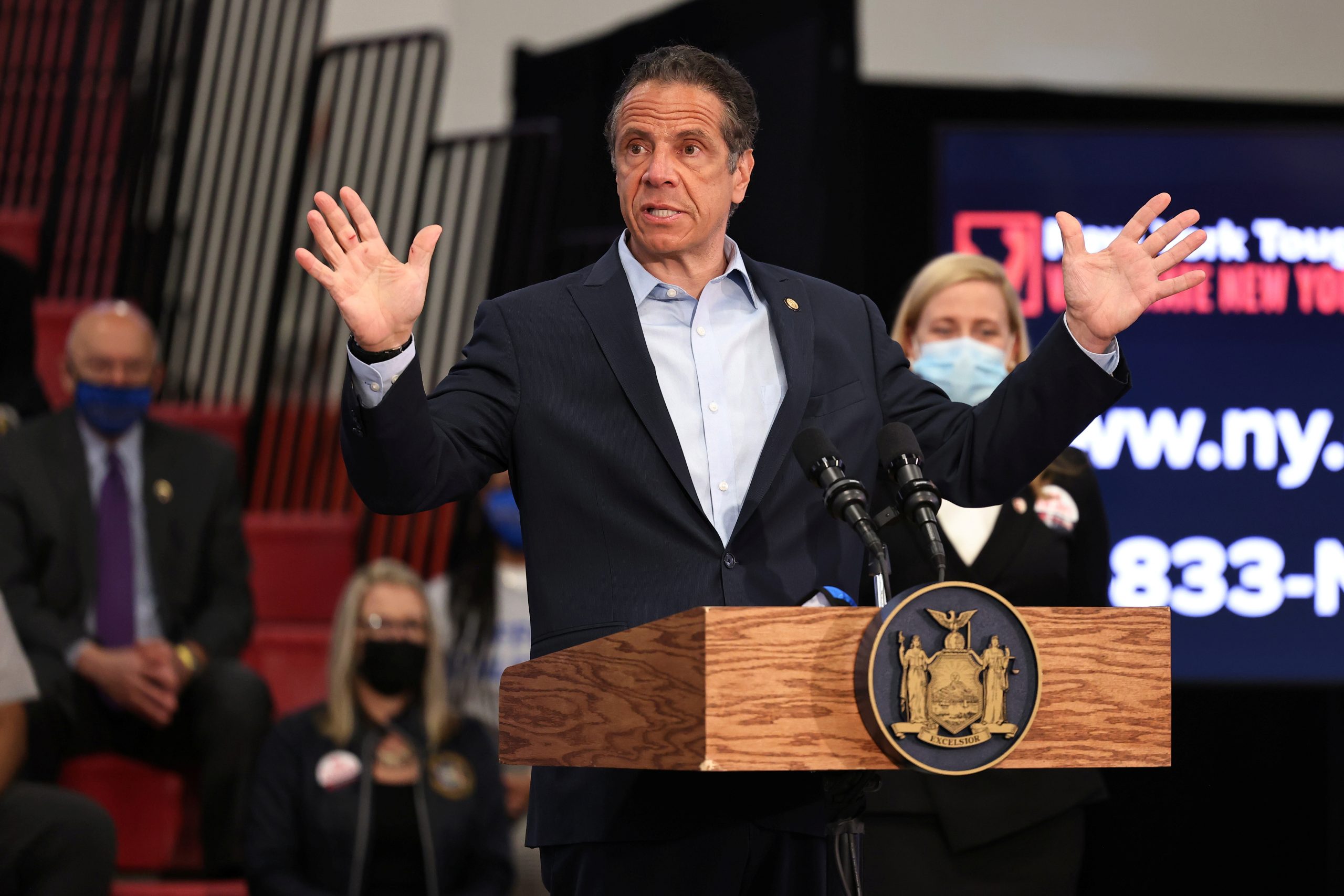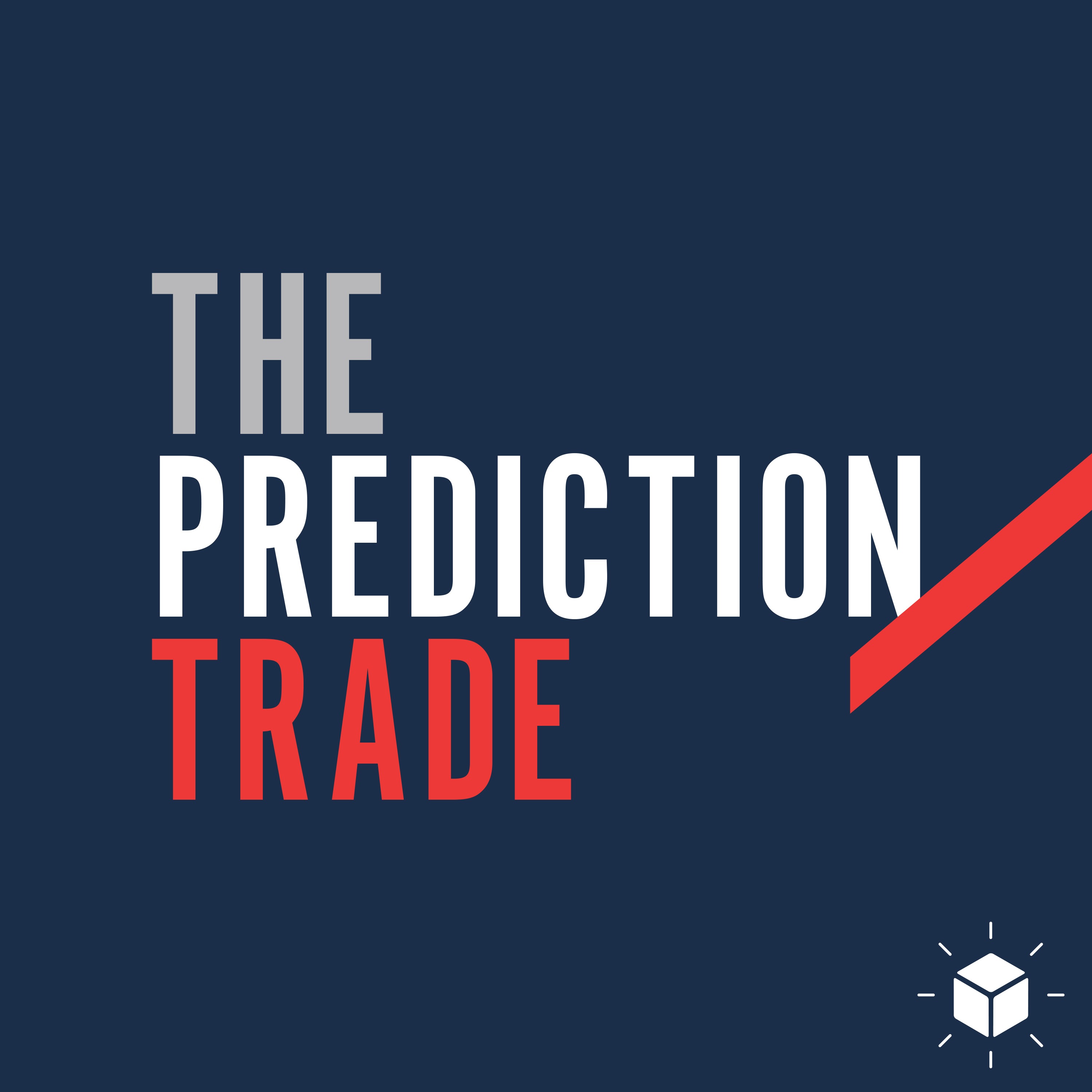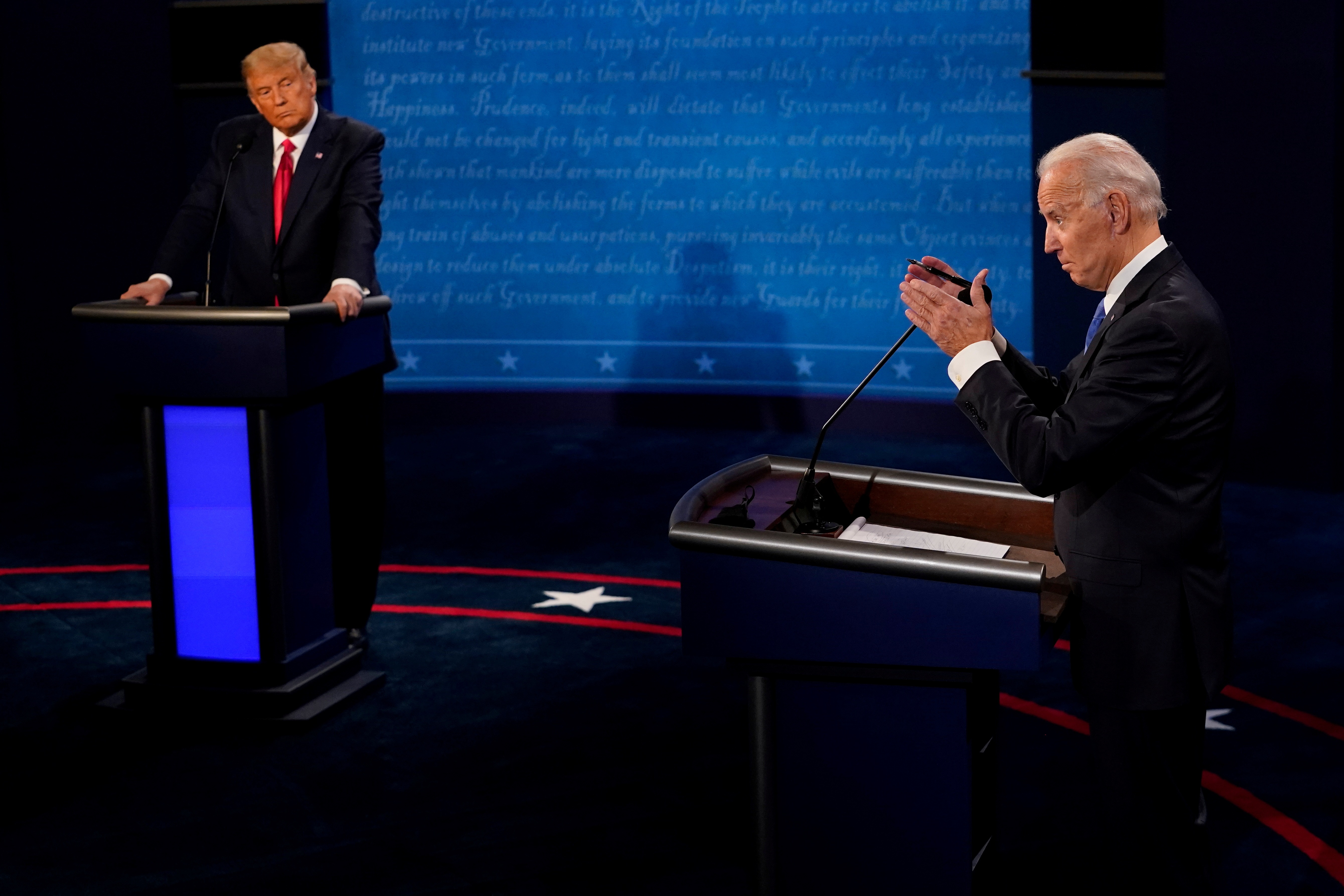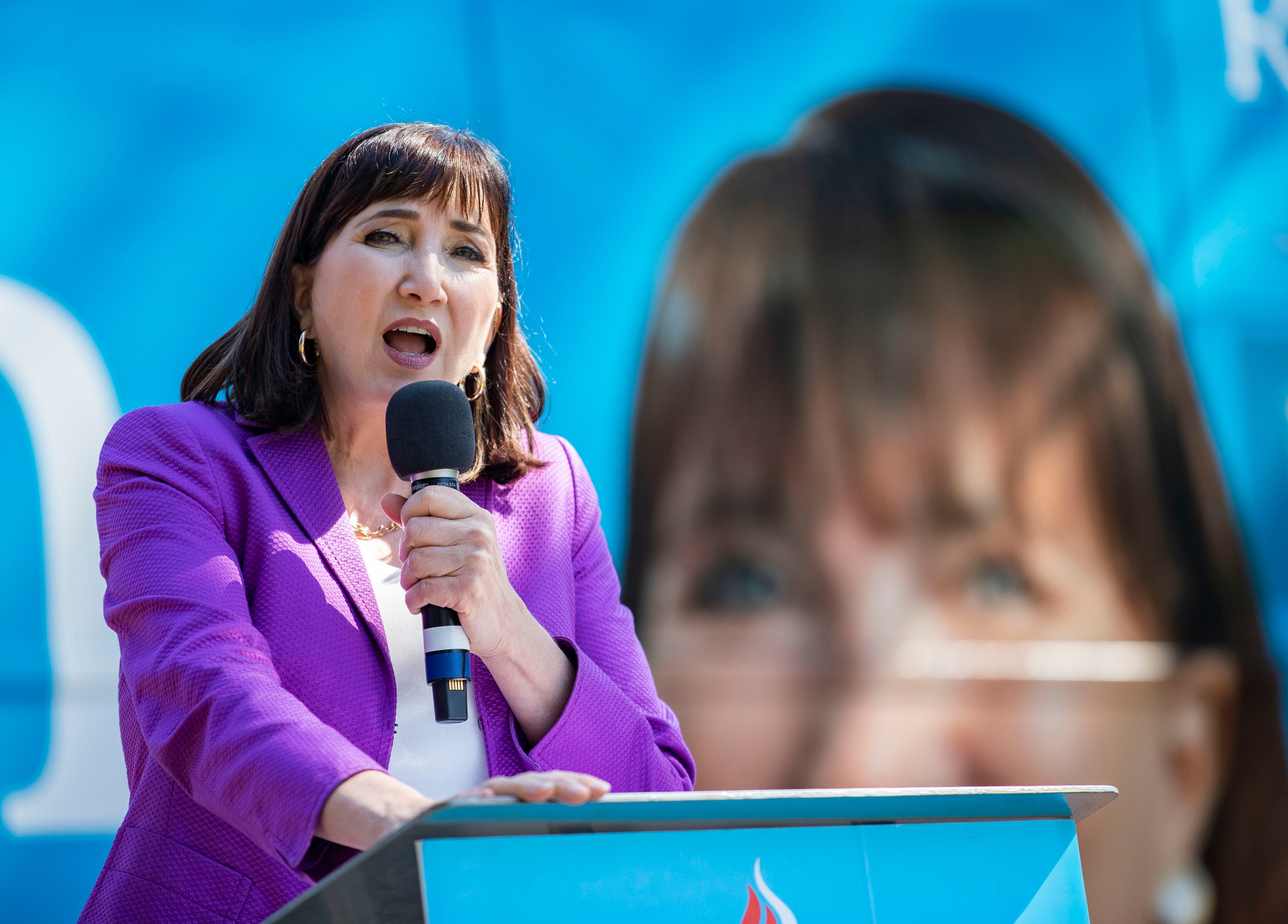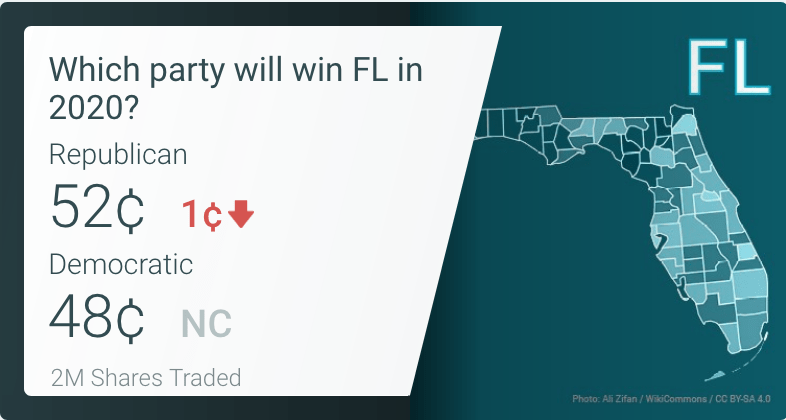Rachel Bitecofer Knows Partisan Politics
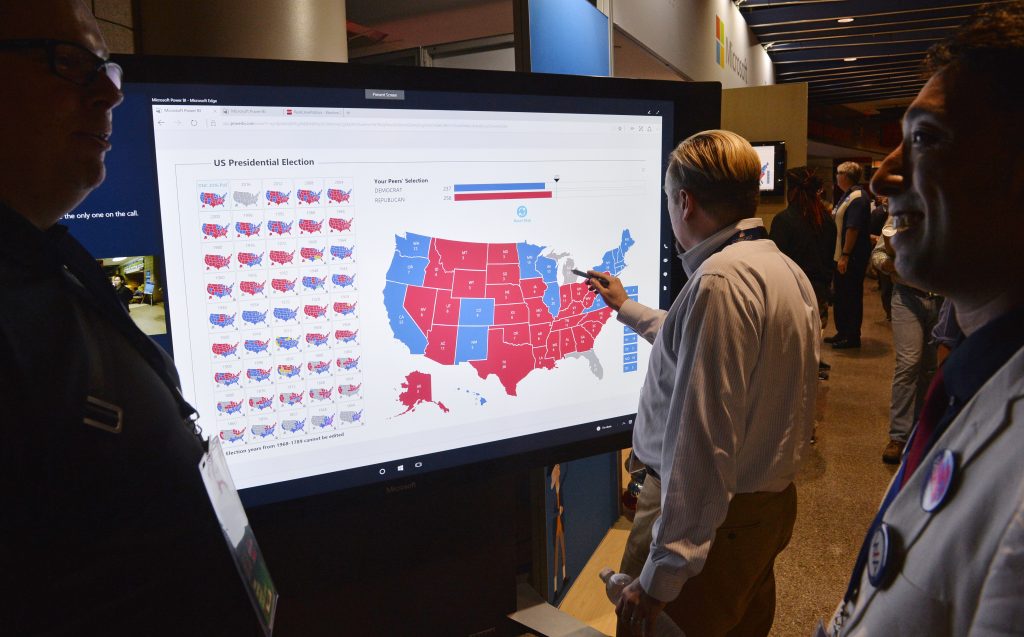
Senior researcher at the Niskanen Center Rachel Bitecofer is no stranger to political forecasting, skyrocketing in popularity after nailing the 2018 midterms with near total accuracy. And to prediction market traders who heed her predictions, Bitecofer has proven her modeling is not only insightful, but valuable.
Political polarization and hyper partisanship lie at the heart of Bitecofer’s modeling. Gone away are the days when liberal Republicans and conservative Democrats will cross party lines at the ballot box, she contends. Instead, more attention must be paid to demographic compositions and turnout among voters.
In her latest report, Negative Partisanship and the 2020 Congressional Elections, she highlights where Democrats could make potential seat gains in the House of Representatives, as well as identifying a pathway for a Democratic majority in the Senate. In a New York Times op-ed, she makes the case for why Joe Biden’s vice-presidential running mate choice is more important now than ever.
But in her recent appearance on The Political Trade podcast, Bitecofer turned to PredictIt’s prediction markets for the first time, calling out where hyper partisanship was blinding market constituents to likely outcomes, revealing potential pricing opportunities across the site.
When all was said and done, more than a dozen markets were scrutinized by the self-described election whisperer. The full episode can be heard here:
Below is a lightly edited transcript of the first half of the episode.
Jeff One of the things I’m really excited about this show is when we announced in the last episode that Dr. Bitecofer was going to be on, our listeners sent us a lot of emails saying, ‘We’ve heard her, we respect her work, we really want to hear her thoughts on the markets.’ So, we’re going to do things a little bit different this time and spend a lot of time in our trade section. We’re going to walk through a lot of trades and hear exactly what Rachel has to think about these specific markets and where the probabilities are pointing in her direction from her perspective, so hopefully, she’ll be ringing the bell quite a bit as we walk through these markets, and I’m looking forward to bringing her on. So let’s actually do that. Rachel, are you on with us?
Rachel Bitecofer I am. I’m excited to be here. It’s gonna be a great conversation.
Jeff Well, it’s going to be an interesting conversation because I won’t mind admitting just just a moment ago, when Mike and I were speaking with you, it became evident that you’re really not frequenting the political prediction markets, you’re not a trader. So you’ve never placed a wager on these markets before. And even though you’ve been very visible as a result of your prowess and prediction, and done a number of shows and podcasts and your reports, really, I know when you first released it, it almost crashed your website. But what you’ve never done is sit down and talk about the specific market opportunities and how your modeling and your forecasts relate to the opportunities that are available for prediction market traders. So we thought we would kind of shift our show over and spent the bulk of this looking at those markets. I think we have 15 markets to walk through in the second segment of this episode. So we’re looking forward to it and maybe we’re gonna end up tarnishing you a little bit because I think you were surprised as to how the economics of prediction market trading worked.
Rachel Bitecofer Yeah, I am. I mean, it’s surprisingly simplistic and obviously very lucrative. So I know I had a few followers through 2018 that would ask me about things, and then they came back to me very, very pleased after the election and told me that they had made money off of me, but I had no idea they had made that much money off of me. So no wonder they were pleased. And, you know, they could have sent some flowers or something.
Jeff You would think, right? Well, I think that’s what makes this so genuine. You truly are new to the prediction markets, but not by any means new to the data analysis and elections. So let’s let’s jump into it. But to begin with, it is true that 2018’s election and your forecasts really set you apart among your peers. Can you just give us a little bit more background about what those forecasts were and what accounted for the different outcomes that you predicted as opposed to your peer group?
Rachel Bitecofer Yeah, it’s so important just to remind everybody that what makes my stuff different is the theory. You know, the modernization of election analysis that I’m bringing, which is driven with a sore need to get the election analysis world talking about political polarization and hyper partisanship and how that is tangibly affecting elections and political behavior, voter behavior. I was actually just having a conversation before this conversation, recounting, you know, the timeline of how I built my theory of my model. And it reminded me so much of the frustration of 2015, 2016 and even 2017 watching TV, reading stuff online, on election websites, and just seeing this major gap of people not appreciating how much polarization was affecting things. So my research is really— the forecasting stuff is the fruit on the tree, but the tree is this argument that voter behavior has been really impacted by polarization, that we aren’t paying enough attention to the demographic composition of electorates and the differentials of turnout between one cycle or the next. Those demographics make a partisan composition. And ultimately, at the end of the day with voters, partisanship has always been important. But now it’s really super important, because in the old days you used to have liberal republicans and conservative democrats, and they might be inclined to vote for Ronald Reagan if they were a Reagan Democrat, or maybe vote for a Democrat if they were a Republican that was attractive to them. These days, that’s just not the case. I mean, there’s very little crossover voting. It’s about 10% in any given elections, very predictable. And the amount of independents that are truly independent is pretty small. Most are what we call leaners. So they lean toward one party or the other. And they vote predictably for that party that they lean. That small group of pure independents are also kind of predictable in their behavior, they tend to break against the party in power, I call them change voters. And so what we haven’t been looking at is what I call the turnout swing. And that is not just with most partisans, but also independents. So, you know, sometimes independents break in favor of Democrats, it’s not necessarily because the same 100 people suddenly moved left to right, it’s because a different 100 people show up or an additional 100 people show up. And so I’m really trying to bring that nuance to how we look at election outcomes, how we predict them and get people to understand what moves voter behavior at that mass level. And once you do that, you notice that a lot of the things people are looking at like polls, those are not signals. Those are nice indicators, but the signals are much bigger, more set in stone fundamentals that we can see far in advance.
Jeff And that clearly is the differentiator in your modeling, that you’re more focused on partisanship that is more predictive of voters outcome or how any individual is going to vote. Tell us how you quantify that. How would you quantify partisanship?
Rachel Bitecofer I mean, partisanship is easy to quantify. You have self-identified partisanship. The way that my forecasting model actually works, it’s very, very different. Even this prediction market, as it was explained to me, is producing these probabilities, or it’s a function of probabilities. Certainly Nate Silver’s model, which is the gold standard model for probabilistic forecasting is a totally different version of what’s happening. My model is not actually a probability model at all. What it’s looking at is it’s looking at the demographic characteristics of a state or a district. It’s looking at particularly two factors of those demographics: the percent of non-white or white population inversely, and it’s looking at the percent of college educated population, because my theory, at this time period now is accepted wisdom, but when I first debuted it back in 2017, it was a kind of a radical idea that we were going to see this explosion in realignment of college educated voters, not just from current college-educated adults changing, although there is some of that, those are mostly independents moving more to the left. The big realignment for college education actually is coming from generational replacement. Gen Z and millennial college-educated whites are not aligning to the Republicans, they’re aligning to the Democrats. It’s no longer cool to be Alex P. Keaton. In fact, it’s not cool to be a Republican for many of the under-40 crowd. And so when we look at what’s happening in the suburbs, some of the analysis kind of stuck in this like perception of the suburbs as distinctly white and populated by baby boomers and maybe Gen X, but now your average homeowner in those suburbs might be a millennial, and millennials are hitting 40. They’re going bald, they’ve made the terrible mistake I’ve made of having children. And you know, they’re finally coming into their age of voting because even though people legally become eligible to vote at 18, generally speaking, they don’t really get into voting until they get deeper into adulthood. So, you know, really talking about these three factors.
Jeff Such that the model more firmly defines the electorate in terms of the partisanship, that puts the focus obviously on the swing, but your primary contention is that that swing voter group is much smaller than others might have believed in the past. So that puts a lot of emphasis obviously on predicting how they’ll be voting in the next election. But there’s a term that you use in your last report that wasn’t clear to me. You spoke about protest balloting and that protest balloting in 2016 was three to five times higher than normal in the swing states. Could you say a little bit more about that and what protest balloting means and how it might impact this next election?
Rachel Bitecofer Yeah, sure, because it’s actually the one weak spot in my forecast. It is the Achilles heel. You have this big coat of armor, and there’s almost nothing that could go wrong with it, but there’s this one thing that could, right? And it’s actually this protest balloting thing. I don’t think it will. I talk about in my forecast, negative partisanship being such that it is, that I kind of anticipated that Bernie would run a competitive race, but it wouldn’t be as competitive as 2016 because the field would be fractured this time. He wouldn’t have all of the vote to himself basically from that side of the party, and the losers would not be as sore this time and that ultimately, with Trump being an actual threat and not a hypothetical one, we would see less defection, but third party defection is the act of casting a protest ballot. And what we saw in 2016 was extraordinarily high rates of that. And it went right in balance to, you know, you don’t know who people wrote in, most states do not record the write-in name because it’s so arduous to do that. But one can assume a great number of write-ins were for Bernie Sanders. Green Party candidate Jill Stein got quite a few of ballots, but also—
Jeff Well, in states like Wisconsin—
Rachel Bitecofer Oh, yes. Critical.
Jeff That was nearly 6% of the vote was protest balloting.
Rachel Bitecofer Yes, it was over six. It was 6.32 in Wisconsin, and in all of the swing states aside from Ohio and Iowa, Trump won the state with less than 1% of the vote, and he did not break 50% and, you know, a significant, more than four, three or 4%, up to 6% in Wisconsin of the vote, way more than the margin, went to third party balloting. And the Johnson vote, I want to point out, not all of that would have gone to Trump because there is a significant part of white males who voted for Johnson over the issue of pot that, you know, they weren’t voting because they’re libertarian.
Jeff Sure, and at this point the libertarians haven’t even identified a candidate yet, so how would you handicap protests balloting as it sits right now?
Rachel Bitecofer I have some things that I’ll be watching very closely through the general elections, not things that I can anticipate beforehand. It’s stuff that I have to wait and watch and see the data as it materializes. But certainly if I was to see signs of, and I do know the GOP is making the targeting of these people a big part of their campaign strategy. Because if you’re Brad Parscale, if you’re in charge of re-electing Trump, you’ve got a guy who didn’t win with 50% of the vote the first time, who has never cleared 50% approval the whole time he’s been president basically, and you have to re-elect the guy, you can’t do it if it’s a 50% threshold. You have to bring that winning margin back down. And the only way to do that is to recreate 2016 and get a lot of protest balloting. So they are going to target really, really heavily target disaffected Bernie Sanders voters on social media, YouTube, and try to play up the disaffection and dissatisfaction with Biden, you know, suspicion of the DNC, and try to get them to do it. Again, it’s their only real viable pathway, but there will be very clear indicators in the data that will tip me off on that and I will let you guys know.
Jeff OK, well, your report, Negative Partisanship in the 2020 Congressional Elections is at the Niskanen website, but can you give us a brief summary—we have so many trades to cover, I want to make sure we save time for the back end—but can you give us a brief summary of the key takeaways from that report.
Rachel Bitecofer That one deals specifically with Congress, so I’m looking at the House and the Senate. And I’m really looking at the House as not a situation where, ‘will Republicans be gaining back a certain number of these 40 seats,’ although they might gain a random couple of seats, right? Because there were a couple that were random: Oklahoma five, South Carolina one. They, maybe better defended, won’t go back to the Democrats. But in general, I see Democrats still on offense in 2020 and Republicans still in defense. In fact, because Democrats don’t campaign well—they’re not great at electioneering and they still haven’t adjusted to polarization into nationalized campaigning—they left a lot of seats on the table, especially in the state of Texas. So that report really highlights where Democrats could make potential seat gains, and in the Senate, I identify the pathway for the majority for Democrats, really looking at how likely it is that Colorado, Arizona and Maine are to flip. And then Democrats need a fourth seat because they’re going to probably lose the Alabama senate seat. So I’m looking at which of the remaining seats are the most viable for that and highlighting North Carolina as probably the most viable. But if Chris Kobach is the nominee in Kansas, that race becomes very, very viable too, and then of course, the Montana Senate race is good for them too potentially, and you’ve got the Georgia Senate race. You know, I think that’s going to be contingent on who the vice presidential pick is.
Jeff And we’ll walk through those in our trade segment but the top line is pickup, you’re projecting a pickup on Senate seats and a pickup on the House as well for the Democrats?
Rachel Bitecofer Yeah, and I would have to say, if you had me at knifepoint today, I would say Democrats are very competitive to flip the Senate right now.
Jeff And that’s big news. So in the last week or so, coming off of the pandemic, and you know, some of the states emerging out of lockdown, but of course, we have new events with the George Floyd atrocity and the subsequent protests, demonstrations and riots in various different cities. How do you feel that may have impacted the work that you’ve done to date? And do you see any shifts as a result of that that are evident?
Rachel Bitecofer Yeah, when everybody else was freaking out that this was going to benefit Trump because of Nixon and etc., I was like, ‘Yeah, no. The electorate is not the 1968 electorate.’ I mean, not everybody else, but quite a few people were making those comparisons. You know, Nixon was an outsider, he was able to say the incumbent administration is mishandling this. Polarization has really changed things as I’ve discussed before, but white voters are much more racially liberal. You can see this in polling data. So I knew that this would not help Trump, it would only compound, I mean, people see him particularly as a cause of racial strife, not a solution for it. But these are all things like the pandemic, when I did my forecast update, Biden had effectively sewn up the nomination. And the pandemic was just, it was just obvious that it was becoming very serious that we were shutting society down, which is something that I would not have known was possible to do a week before. So I said—
Jeff And if I may add, you were forecasting 70% turnout before the pandemic. So how has that changed?
Rachel Bitecofer I think unless we get a second wave we should still see pretty high turnout.
Jeff For the first time ever on the “Who will win the 2020 Presidential Election” market, Biden has surged ahead. He’s been behind Trump all along. And Biden is now up to 54 cents from always being sub-50 cents or sub 50% probability. So he just reached his high just in this past week, trading as high as 54% probability.
Rachel Bitecofer Well, I hope some people listening to this podcast bought way back because that, I mean, that’s one thing now like, when Biden does win, people will point to the pandemic and the economic collapse as the causal factor, but trust me, he was always destined to win.
Jeff Well, we’re gonna turn an academic into a wagerer in our next segment. We’re gonna take a quick break, but when we’re back, Rachel, we’re going to walk through about 15 different markets for your take on where the probabilities lie from your model. So, we’ll be right back.
Listen to the full episode here to catch more than a dozen of Bitecofer’s market forecasts!
